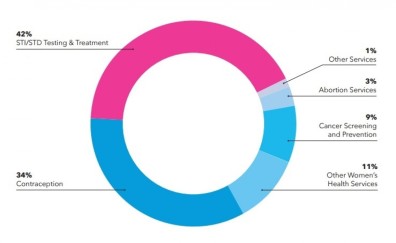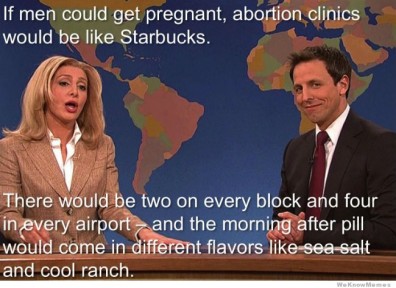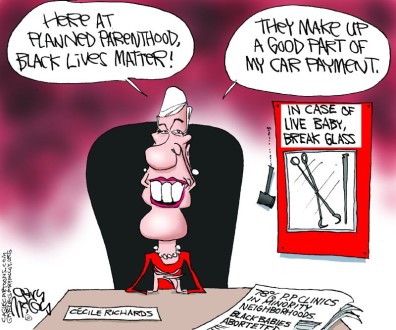As the presidential debate progresses, the funding of Planned Parenthood has become a heated topic. Disagreements on the funding of Planned Parenthood even threatened a government shutdown. While differing opinions on the Planned Parenthood controversy are getting major headlines, lets look deeper into the people who are really effected by this decision.
via The Washington Post
As this graph shows, only about 3% of Planned Parenthood’s services are abortion services. Why is this important? Because it is the anti-abortion claims against Planned Parenthood that are being debated. 42% of Planned Parenthood services are STI/STD testing and treatment. A significant portion of their services are also towards contraception, women’s health, and cancer screening and prevention services.
These statistics may just seem like numbers, but when looking deeper, there are several underlying race and gender disparities. Here are some facts:
- Of those diagnosed with breast cancer, African-American women are most likely to die from breast cancer.
- American Indian/Native Americans are more likely to be diagnosed with HIV or other STIs/STDs.
- For 35 years, the number one killer of Asian American women is cancer.
- Breast cancer is the number one cause of cancer death among Latinas. Even when diagnosed at a similar stage and age as non-Latinas women, Latinas are more likely to die from breast cancer.
- In Miami, black and Hispanic girls are at a higher increased risk for unplanned pregnancies.
via the Miami Herald and Planned Pregnancy
These statistics show that minorities are disproportionately effected by breast cancer, STDs/STIs, and unplanned pregnancies. Defunding Planned Parenthood would have a greater effect on the minority population in the United States by taking away services that are needed by these women at an affordable rate.
While looking at nationwide issues it is easy to feel removed from the situation, this issue falls close to home. However, on September 4, 2015 the Planned Parenthood in Pullman was firebombed. While the arsonist is still unknown, detectives have thought that this was a direct attack against Planned Parenthood. After insurance coverage, an estimated $250,000 will be needed for Planned Parenthood to be rebuilt.
Overall, the funding of Planned Parenthood continues to be a large debate. However, defunding Planned Parenthood would disproportionately effect the minorities and women in our society.
- If Planned Parenthood was defunded, how would those who need access to other women’s health services (such as cancer screenings and STI/STD screening and treatment) find those services? Would there be other funding or would women, particularly minority women, just be denied those services? What does this say about the quality of care for women and minorities in our society?
- Take, for example, the arson of the Planned Parenthood in Pullman. Detectives say that this was most likely an intentional attack against Planned Parenthood, so lets say that is true. Why is this not considered a hate crime, or even more an act of terrorism? What does this say about how we interpret violence?
- In what ways are the two cartoons satirizing the issues that have arisen from the debate about Planned Parenthood funding?
Sources:
During National Minority Health Month, Planned Parenthood Urges Communities to Work Together Toward Health Equity :: Planned Parenthood. (n.d.). Retrieved October 7, 2015.
Sorenson, K. (2015, October 6). Why we continue to need Planned Parenthood. Retrieved October 7, 2015, from http://www.miamiherald.com/opinion/op-ed/article38010636.html
Ye Hee Lee, M. (2015, August 12). For Planned Parenthood abortion stats, ‘3 percent’ and ’94 percent’ are both misleading. Retrieved October 7, 2015, from http://www.washingtonpost.com/blogs/fact-checker/wp/2015/08/12/for-planned-parenthood-abortion-stats-3-percent-and-94-percent-are-both-misleading/


